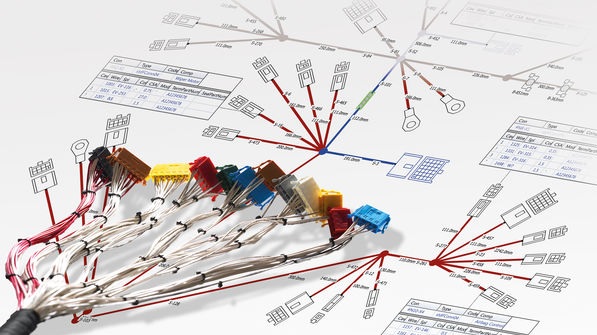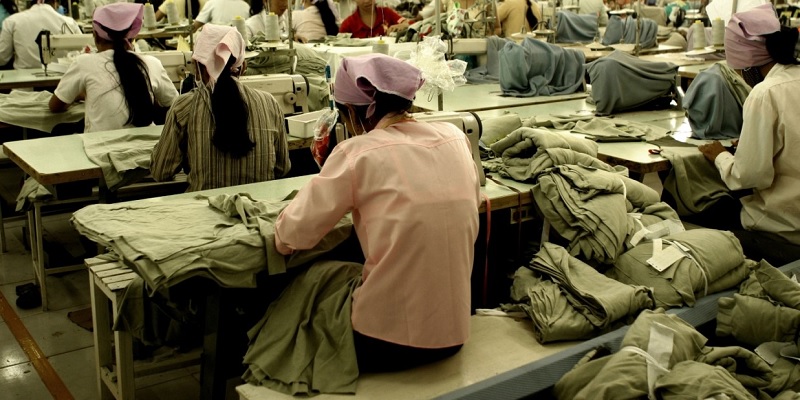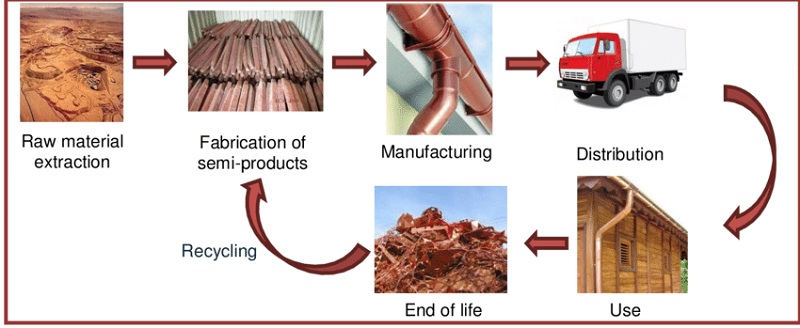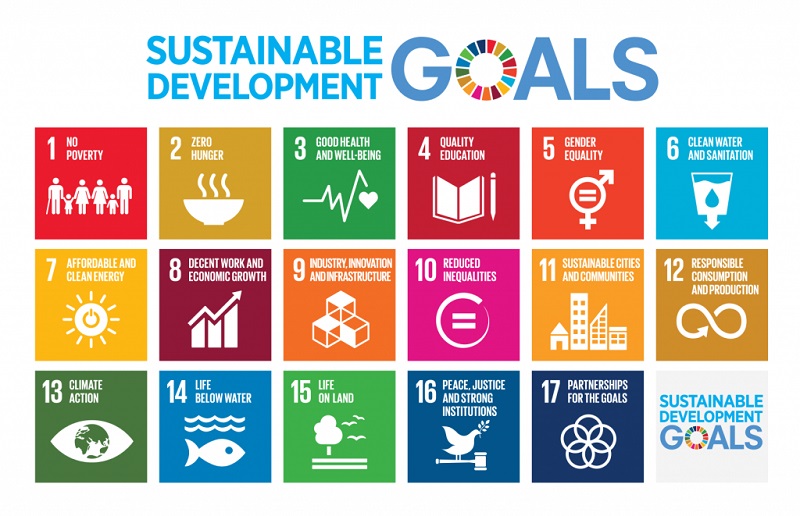 |
Chris Bell | 'The man on top of the mountain didn't fall there.' |
| - Vince Lombardi |
 |
Chris Bell | 'The man on top of the mountain didn't fall there.' |
| - Vince Lombardi |
SNHU - MBA-690 Operations Management and Technology
Written by: Chris Bell - November, 2018
The product lifecycle for WesBell’s wire harnesses start with the wire and component manufacturers, travel to distributers, then to contract manufacturers, then to Original Equipment Manufacturers that assemble appliances and devices, and finally to the end user. Even before the manufacturer designs and makes copper wire, they need to buy supplies from multiple vendors too, such as drawn copper, insulation compounds and equipment. The government continuously adds restrictions that protect end users, such as RoHS compliance, which restricts the use of lead and other hazardous chemicals from being used in a washing machine, for example. Some channels of the lifecycle can only adhere to these government restrictions by finding certain manufacturers that adhere to them. For example, how would Best Buy know if Hewlett Packard used lead in their computers without researching it and asking for a complete list of materials used to manufacturer it? Best Buy can’t shrug their shoulders when they sell other brands of products that contain hazardous materials.

WesBell will only buy from suppliers that meet government restrictions such as RoHS, REACH, OSHA, MSHA and other conflict materials requirements so that they can promote those benefits in their marketing literature. Even though WesBell doesn’t design or manufacturer the products, they can promote their compliance by purchasing from a select list of approved suppliers. “Lifecycle management (LCM) is an integrated and flexible approach to business management that draws on the principles of lifecycle thinking (LCT) to help businesses of all kinds – manufacturers, retailers, financial, professional – understand their environmental impacts and where they occur within the lifecycle of their operation, from raw materials through to end-of-life. (Sustainability Victoria, n.d.)”
Some companies will purchase products from overseas manufacturers that have little-to-no rules and regulations, and they run sweat shops. They don’t treat their employees well, they pay them low wages and they fire them on the spot if something goes wrong. These types of things aren’t allowed in the United States; however, US companies buy from suppliers that operate in this negative manner. Nike was buying their shoes from these types of companies in foreign countries to make higher profits, but the government stepped in and forced Nike to complete audits on their vendors to be sure that they meet certain criteria. It started in 1991 and large protests began in 1993. According to Nisen (2013) of the Business Insider, “Abuses continue to emerge, like a report that alleging that a Vietnamese sub-contractor ran women outside until they collapsed for failing to wear regulation shoes.” Nike later solved the problem and Nisen (2013) concludes with, “But by becoming a leader instead of denying every allegation, Nike has mostly managed to put the most difficult chapter in it's history behind it and other companies who outsource could stand to learn a few things from Nike's turnaround.”

Some of the wire harnesses that WesBell manufactures for General Electric are shipped straight to Mexico and China for further work before coming back to the US. President Trump is trying to limit this process by adding import tariffs from certain countries so that companies like WesBell can hire more people to complete the rest of the work for GE, rather than sending product back and forth to China and Mexico to profit from lower wages. Some companies have taken this process a step further by opening facilities in low-labor countries, but they still sell most of their goods within the US. “For months, we have urged China to change these unfair practices, and give fair and reciprocal treatment to American companies,” Mr. Trump said. “We have been very clear about the type of changes that need to be made, and we have given China every opportunity to treat us more fairly. But, so far, China has been unwilling to change its practices. (Bradsher & Tankersler, 2018)”
WesBell’s growth in the services industry is will start with contacting all their current distribution customers to see if they want to outsource their wire harnesses and cable assemblies to an ISO 9001 certified contract manufacturer. The trust has already been built and the strong relationships will help WesBell secure enough production business to keep their staff and equipment busy for 40 hours per week. Simultaneously, while the account managers contact their customers and book new orders, the marketing team will create and distribute brochures and literature, create email campaigns, design landing pages on their website for services and discuss the quality of their work on social media platforms. According to Quesenberry (2018) of the Harvard Business Review, “Philip Kotler [Professor of Marketing at Northwestern] once said, “You should never go to battle before you’ve won the war on paper.” But countless businesses have done just that with social media. Although 97% of Fortune 500 corporations are on LinkedIn, 84% are on Facebook, and 86% are on Twitter, many brands entered the social media front lines without a clear strategy.” Since WesBell’s services will be reactive to the customer’s equipment, device or appliance, WesBell will need to specifically define the services they plan to offer before over exaggerating their abilities on social media platforms. It may seem beneficial to boost your company as the biggest and the best along with the best customer service and delivery dates but breaking your marketing promises will travel through social media as fast as the initial campaign. Their first article process will show customers that they can or cannot handle an assembly because their procedure is to have the customer approve it before production starts. This process eliminates waste over extended periods of time and gives WesBell peace of mind while producing the assemblies because they know that customer has approved it.
The profit generation and cost savings opportunities within WesBell’s lifecycle start with saving a tier of pricing. For example, most distributors sell to contract manufacturers that make wire harnesses and cable assemblies. The contract manufacturers buy wire and components through distribution channels, such as WesBell Electronics, a distributor of bulk wire and cable. However, since WesBell started as a distributor, they have relationships with wire and cable manufacturers to buy direct rather than buying from a distributor. When in direct competition, WesBell buys their components from a distributor but their wire from a manufacturer whereby saving money on their cost of goods. This is a version of vertical integration because WesBell has taken the opportunity to build wire harnesses upon customer request rather than sending their customer to a contract manufacturer. Investopia explains vertical integration in the following way, “Specifically, vertical integration occurs when a company assumes control over several production or distribution steps involved in the creation of its product or service in a particular market vertical.” This can be troublesome for some companies too since they need to worry about being in competition with their customers. For many years, WesBell would produce wire harnesses for customers that requested it but wouldn’t include services in their marketing literature. However, since it became a successful form of profit generation, WesBell decided to take it to the next level.

WesBell retains customers that buy services for much longer periods than customers that only buy products because it’s harder to find a vendor that has the capabilities, equipment, staff and ISO 9001 certification, so customers need to stick with the vendor they have. Also, there’s a much deeper relationship built between the sales person at WesBell and the purchasing agent at the customer because they need to have multiple conversations and meetings about the wire harness to determine how it will be used, what environment it will be used in and how tight the tolerances are with the measurements. This is compared to a customer buying 100 feet of wire online and possibly buying it elsewhere the next time around. Customers like to buy products from open and honest vendors, not just the vendors that say they are, but the vendors that prove it through business activity. A company that claims to sell RoHS and REACH certified products wouldn’t be honest if they were buying and selling products with hazardous materials while claiming otherwise. “[Social Development] Most importantly is awareness of and legislation protection of the health of people from pollution and other harmful activities of business and other organizations. In North America, Europe and the rest of the developed world, there are strong checks and programs of legislation in place to ensure that people's health and wellness is strongly protected. (Environmental Science, n.d.)”
Cost savings opportunities for WesBell start with their current customers because WesBell doesn’t need increased inventory to service the products they already have. A new contract manufacturer startup company would need to buy inventory, but WesBell only needs to buy the equipment to cut and service their wire. Another cost savings opportunity lies in their ISO 9001 certification because it focuses on risk mitigation, limited waste, employee and process efficiencies and continuous improvement. The ACS Registrar’s office for auditing and certifying companies to the ISO 9001 standard mentions on their website, “The ISO 9001:2008/ISO 9001:2015 standard is recognized worldwide, and your customers will understand the benefits of working with companies that are ISO 9001 certified. In fact, some of your customers will only do business with certified companies because it gives them assurance that your management systems are constantly assessed and approved.” The page of their website goes on to mention a few benefits of buying products and services from ISO 9001 certified companies, “Minimizes mistakes, improves reporting and communications, Better quality products and service, more reliable production scheduling and delivery and Standards maintained by annual assessments.” If WesBell follows the standardization of recording errors, finding the root cause of problems and implementing processes and procedures to remedy the issues, they will pass the annual audit and remain certified. This process will lower costs in each subsequent year and continue generating higher profits for the company.
A phase-out plan for WesBell that ensures a sustainable solution towards future innovation and profit streams is to make sure we keep all of the existing jobs in place without letting any employees go. Poor forecasting from management could leave production staff out of work, laid off, finding different jobs and never to return. “The phase-out planning process calculates forecast values for products in discontinuation. You no longer consider these products during current production. (SAP Documentation, n.d.)” WesBell’s employees will need to be transferred to new assembly lines and trained in those processes. ISO 9001 requires that companies document the abilities, performance and improvements of their employees and that the employees are cross-trained. “Keep training records and records of employee education, skills and experience. Once an organization determines how to organize a training program to meet these requirements, they must find a way to keep track of the training. (9001 Resource, n.d.)” This source continues about group training and self-training, both of which help human transition during phase-outs of products.
WesBell’s phase-out plan will be handled slightly different than companies that design branded products and choose to take one product off market. Instead, WesBell’s services are reactive to the customer’s needs and difficult to automate several types of harnesses. Instead, they have similar processes, or stages, that each harness might visit. For example, the questionable product being phased out will be mentioned by the customer and typically they’re committed to all open purchase orders even though some deals can be discussed. This harness might have been stopping at 3 stations out of 8 in the production room (cutting, hand crimping and poking). “If you specify a location product in discontinuation, the system automatically chooses the corresponding phase-out profile, and you can see the forecast values of the location product as well as the corresponding phase-out profile. (SAP Documentation, n.d.)” This is something WesBell will implement so that each employee can see which products are being phased out in their ERP database system. Instead of shutting down a scaled line of equipment that produces one product incredibly fast, WesBell would phase-out customer products when a washing machine is being taken off the market, for example. Some jobs have more automation than others, but WesBell likes to buy tooling and equipment based on multiple customer’s needs rather than a solitary product from a single customer. Investments that are based on one product succeeding carry more risk that WesBell isn’t yet willing to take in their early growth stages.
Sustainability is created by making many long-term decisions that are cost effective, profitable, attractive to the customer, environmentally friendly, and of course, morally and ethically sound. According to www.environmentalscience.org, “This [Economic Development] is the issue that proves the most problematic as most people disagree on political ideology what is and is not economically sound, and how it will affect businesses and by extension, jobs and employability.” Getting certified as an ISO 9001 company is a long term sustainable decision and following the standard without diverting adds to the sustainability. Exit plans and phase-out plans are important to create in forecasts because they’re trigger points for action. For example, WesBell plans to conduct about $1,000,000 in service sales for the first year based on their production room, utilities, employee salaries, equipment and inventory, but if sales are only $500,000 or $250,000, perhaps it will be time to cut the size of the room or exit the service business completely. According to Brown (2018), “Generally, there are two types of owners who intentionally make no plans to exit. First are those owners who can’t leave because their businesses will fail without them or their financial security depends on continued business income.” Exit plans for entire companies should be forecasted just like phase-out plans for individual products. It can be easy to sell a product at a loss if the company is still profitable overall, but if the failing product isn’t helping anything else, it should be discarded eventually. For example, losing money on turkeys in a grocery store before Thanksgiving can be a profit generation tool because customers will buy the rest of their Thanksgiving feast. But losing money on ink for a printer doesn’t make sense because it’s not creating anything else for the company. Hewlett Packard might lose money selling the printer to keep the customer coming back each month for ink cartridges; this is called a loss leader product. Either way, it’s important to have a plan in place to actively move forward when sales are low rather than starting the discussions with management at the time of struggle. Emotions can start to change the path into a downward spiral of losing money.

References:9001 Resource. (n.d.). ISO 9001 Training. Retrieved from:http://www.9001resource.com/iso-9001-training-requirements.html ACS Registrar. (n.d.). Benefits of ISO 9001. Retrieved from: http://www.acsregistrars.com/benefits-of-iso-9001 Bradsher, K. & Tankersley, J. (September, 2018). Trump Hits China With Tariffs on $200 Billion in Goods, Escalating Trade War. Retrieved from: https://www.nytimes.com/2018/09/17/us/politics/trump-china-tariffs-trade.html Brown, J. (March, 2018). The Final Exit Path: No Exit Plan. Retrieved from: https://www.exitplanning.com/blog/final-exit-path-no-exit-plan Environmental Science. (n.d.). What Is Sustainability and Why Is It Important. Retrieved from: https://www.environmentalscience.org/sustainability Investopedia.com (n.d.). Vertical Integration. Retrieved from: https://www.investopedia.com/terms/v/verticalintegration.asp Nisen, M. (May, 2013). How Nike Solved Its Sweatshop Problem. Retrieved from: https://www.businessinsider.com/how-nike-solved-its-sweatshop-problem-2013-5 Quesenberry, K. (January, 2018). The Basic Social Media Mistakes Companies Still Make. Retrieved from: https://hbr.org/2018/01/the-basic-social-media-mistakes-companies-still-make SAP Documentation. (n.d.). Phase-out Planning. Retrieved from: https://help.sap.com/saphelp_scm700_ehp03/helpdata/en/21/2ec95360267614e10000000a174cb4/frameset.htm Sustainability Victory. (n.d.). Lifecycle Management (LCM). Retrieved from: https://www.sustainability.vic.gov.au/Business/Efficient-business-operations/Lifecycle-management# |